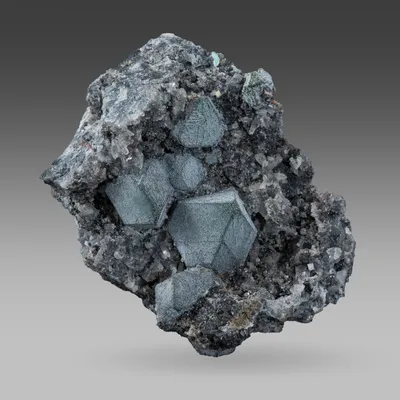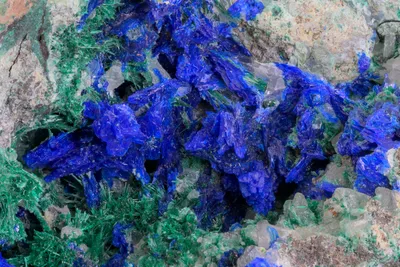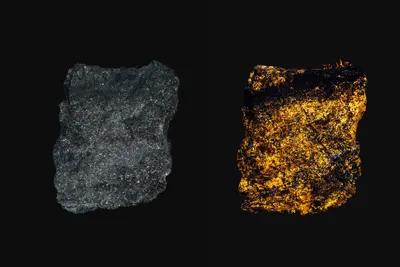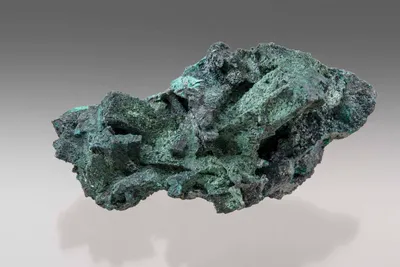Mineral Species
Enargite
Type Locality
No
Composition
Cu3AsS4
Crystal System
Orthorhombic
Status at Tsumeb
Confirmed
Abundance
Very common
Distribution
First, second and third (?) oxidation zones; sulphide ores
Paragenesis
Hypogene; supergene (?)
Entry Number
Species; TSNB118
General Notes
Enargite is a widespread ore mineral in the upper levels of the Tsumeb deposit but is much less common at depth. Steel-grey prismatic crystals of enargite to 80 mm were found in the upper portion of the first oxidation zone. Enargite is the orthorhombic dimorph of luzonite; the latter is the lower temperature polymorph and occurs as a trace constituent of sulphide ores at Tsumeb (Hughes 1987).
Keller (1977a) observed that enargite was the most important hypogene copper mineral in the upper levels, but that its occurrence mainly as millimetre-sized grains led to it being easily overlooked.
Ramdohr (1980) noted that enargite is generally an early-formed mineral in hypogene parageneses but that it is readily replaced by other sulphides of both hypogene and supergene origin. These include tennantite, luzonite, chalcocite, covellite and galena.
Lombaard et al. (1986) showed enargite as a volumetrically significant ore mineral between surface and 23 Level; however, Hughes (1987) stated that enargite-rich ore was important only above 20 Level and mainly above 17 Level with only traces of enargite down to 35 Level. He commented that "Enargite is extremely rare in the lower levels and there is no evidence that it was ever present in most of this ore." His electron microprobe analysis of a specimen from 16 Level contained 47.1 wt% Cu; 34.0% S; 18.6% As; 0.03% Pb and 0.03% Fe.
Enargite is commonly replaced, to varying degrees, by tennantite. Schneiderhöhn (1922, 1929) described enargite being replaced by "green enargite" which was later shown to be an optically distinct variety of tennantite (Hughes 1987).
Paar (1973) reported the occurrence at langite from Tsumeb as a component of oxidised crusts on "… star-shaped enargite ‘drillings’ [twins] …" recovered during a study of minerals from 34 and 35 levels (towards the base of the second oxidation zone). Bartelke (1976) supplemented Paar’s (1973) description by adding that the substrate for the langite (and other associated secondary minerals) was in fact tennantite pseudomorphing enargite.
According to Gebhard (1999) many fine pseudomorphs of tennantite after enargite were found on 16 Level, most of which have oxidised exteriors with a crust of secondary minerals including various combinations of brochantite, devilline, langite, linarite, malachite, posnjakite and serpierite. Crystals of enargite were relatively common between surface and 6 Level but, with increasing depth, the degree of alteration to tennantite (as pseudomorphs after enargite) increased (Gebhard, 1999).
Associated Minerals
bornite; brochantite; chalcocite; chlorargyrite; cupropearceite; cupropolybasite; devilline; galena; germanocolusite; iowaite (?); langite; linarite; luzonite; malachite; posnjakite; pyrite; renierite; scorodite; serpierite; sphalerite; tennantite-(Cu); tennantite-(Zn)
Pseudomorphs
Enargite is reported to form pseudomorphs after the following minerals: azurite (rare); tennantite (rare).
The following minerals are reported to form pseudomorphs after enargite: chalcocite (rare); duftite (rare); malachite (rare); smithsonite (rare); tennantite (common).






